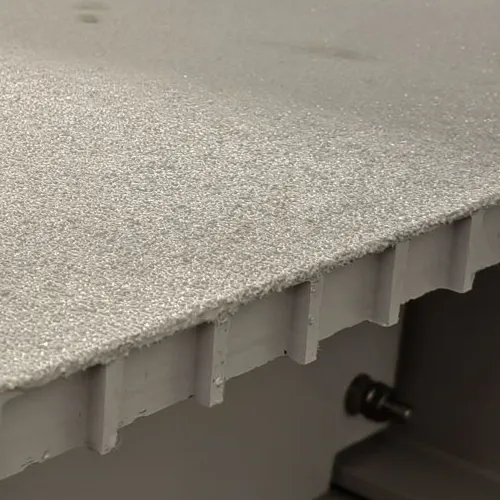loading...
- No. 9, Xingyuan South Street, Dongwaihuan Road, Zaoqiang County, Hengshui, Hebei, China
- admin@zjcomposites.com
- +86 15097380338
- Welcome to visit our website!
frp solar walkway
Exploring the Potential of FRP Solar Walkways A Sustainable Future
In an era where sustainability is at the forefront of urban planning and community design, innovative solutions are becoming increasingly predominant. One such revolutionary concept is the integration of Fiber Reinforced Polymer (FRP) solar walkways into our cities. These structures embody the perfect marriage of functionality, aesthetics, and ecological responsibility, presenting a transformative approach to our pedestrian environments.
Understanding FRP Technology
Fiber Reinforced Polymer (FRP) is a composite material made from a polymer matrix reinforced with fibers such as glass, carbon, or aramid. The combination of these materials results in a lightweight, high-strength structure that is resistant to environmental degradation, corrosion, and UV damage. This resilience makes FRP an ideal choice for outdoor applications, including walkways, bridges, and other infrastructure elements.
The Solar Component
Integrating solar technology into FRP walkways takes this concept a step further. By embedding photovoltaic cells into the panels, these walkways can harness solar energy while providing a safe, durable surface for pedestrians. As urban areas grow increasingly congested and energy demands rise, utilizing every available surface for energy generation is a strategic move towards self-sustainability.
Benefits of FRP Solar Walkways
1. Sustainable Energy Production One of the most significant advantages of FRP solar walkways is their ability to generate renewable energy. The energy harnessed through solar panels can be utilized for street lighting, charging stations for electric vehicles, or even for nearby buildings, reducing reliance on fossil fuels.
2. Durability and Low Maintenance FRP materials are known for their longevity. Unlike traditional concrete or asphalt, they do not crack or erode easily, leading to reduced maintenance costs and a longer lifespan. This durability means that cities can invest less in repair and replacement over time.
frp solar walkway

3. Aesthetic Appeal With the increasing focus on urban aesthetics, FRP solar walkways can be designed in various colors and patterns to enhance the landscape. These walkways can also incorporate lighting designs, adding to the ambiance of urban spaces, especially at night.
4. Safety Enhancements The surfaces of FRP solar walkways can be designed to be slip-resistant, ensuring that pedestrian safety is prioritized. Additionally, these panels can be fitted with LED lights to improve visibility at night, enhancing user security.
5. Innovative Urban Design Integrating FRP solar walkways encourages planners and architects to think creatively about urban spaces. These walkways can connect parks, shopping areas, and residential districts, promoting walkability and reducing vehicular traffic. This not only helps decrease pollution levels but also fosters a culture of community interaction.
Challenges and Considerations
Despite the many advantages, the implementation of FRP solar walkways is not without challenges. The initial cost of installation can be higher compared to traditional materials, which may deter some municipalities from adopting this technology. Moreover, there is a need for further research into the optimal placement of solar panels to maximize energy capture throughout the year, as well as continued advancements in the efficiency of the photovoltaic cells themselves.
The Future of FRP Solar Walkways
As the world moves towards sustainable solutions to combat climate change, the potential for FRP solar walkways continues to grow. Innovation in technology and decreasing costs of solar panels mean that in the coming years, these structures could become commonplace in urban environments. Policymakers, urban planners, and architects play a crucial role in advocating for and implementing these solutions.
Conclusion
FRP solar walkways symbolize a forward-thinking approach to urban design that aligns with global sustainability goals. Through the integration of durable materials and renewable energy technologies, cities can create pedestrian-friendly pathways that not only serve to connect communities but also contribute to a greener future. As advancements continue and awareness grows, the dream of energy-producing walkways may soon become a widespread reality, paving the way towards sustainable urban development and a cleaner planet for generations to come.
-
The Rise of FRP Profiles: Strong, Lightweight, and Built to LastNewsJul.14,2025
-
SMC Panel Tanks: A Modern Water Storage Solution for All EnvironmentsNewsJul.14,2025
-
GRP Grating: A Modern Solution for Safe and Durable Access SystemsNewsJul.14,2025
-
Galvanized Steel Water Tanks: Durable, Reliable, and Ready for UseNewsJul.14,2025
-
FRP Mini Mesh Grating: The Safer, Smarter Flooring SolutionNewsJul.14,2025
-
Exploring FRP Vessels: Durable Solutions for Modern Fluid HandlingNewsJul.14,2025
-
GRP Structures: The Future of Lightweight, High-Performance EngineeringNewsJun.20,2025
